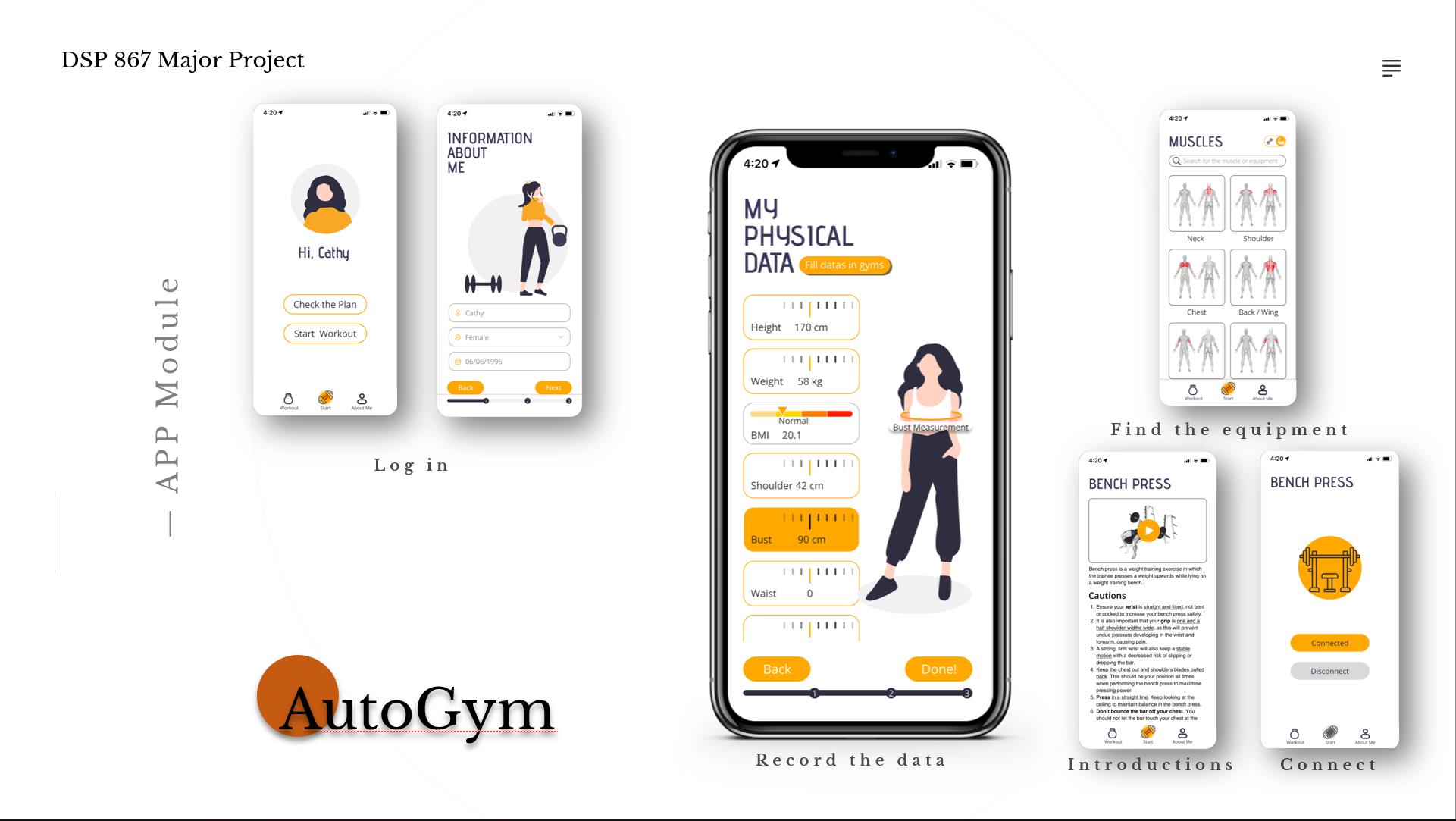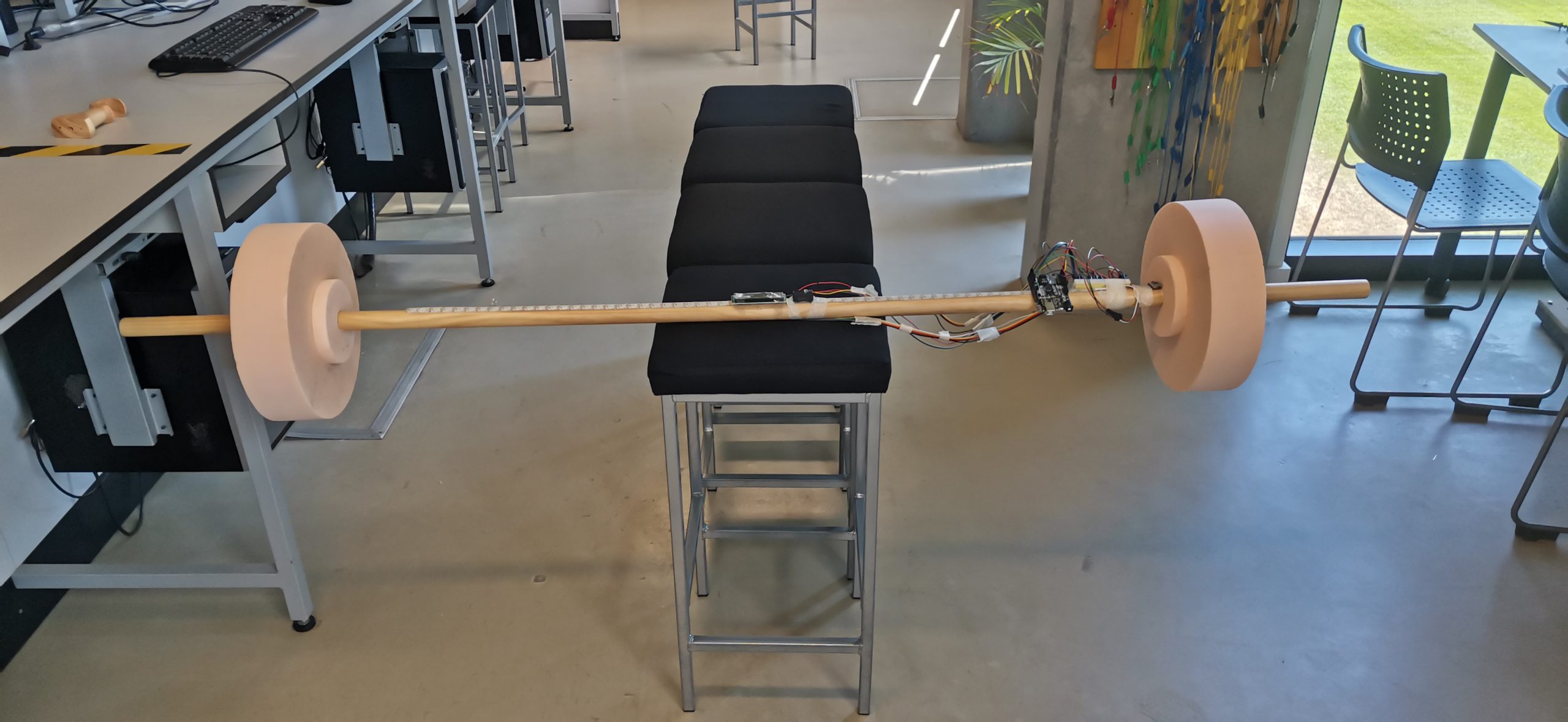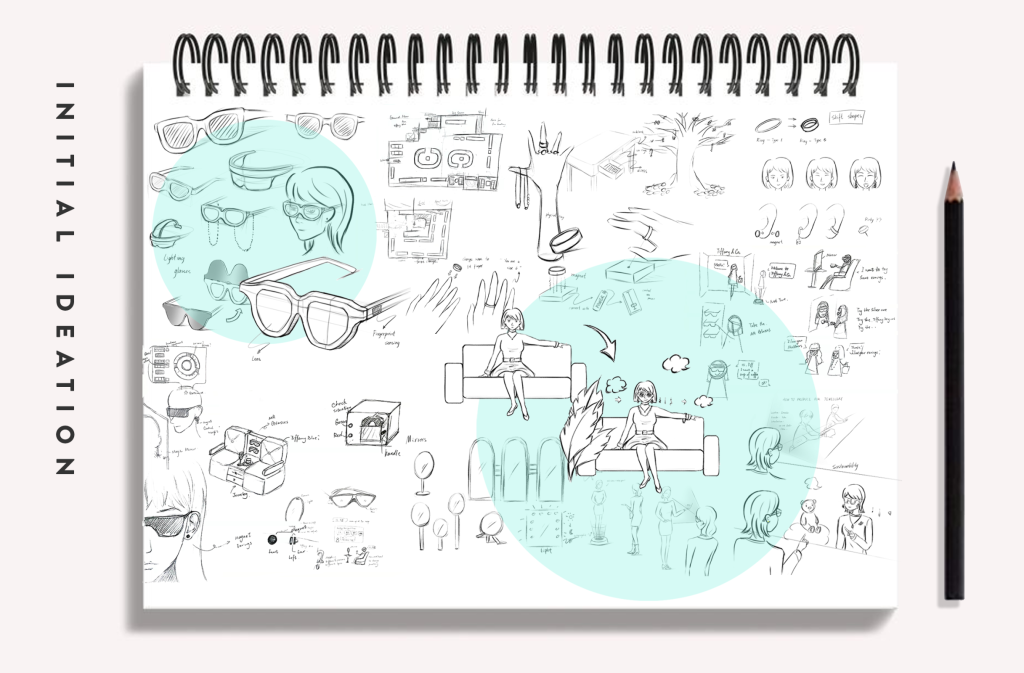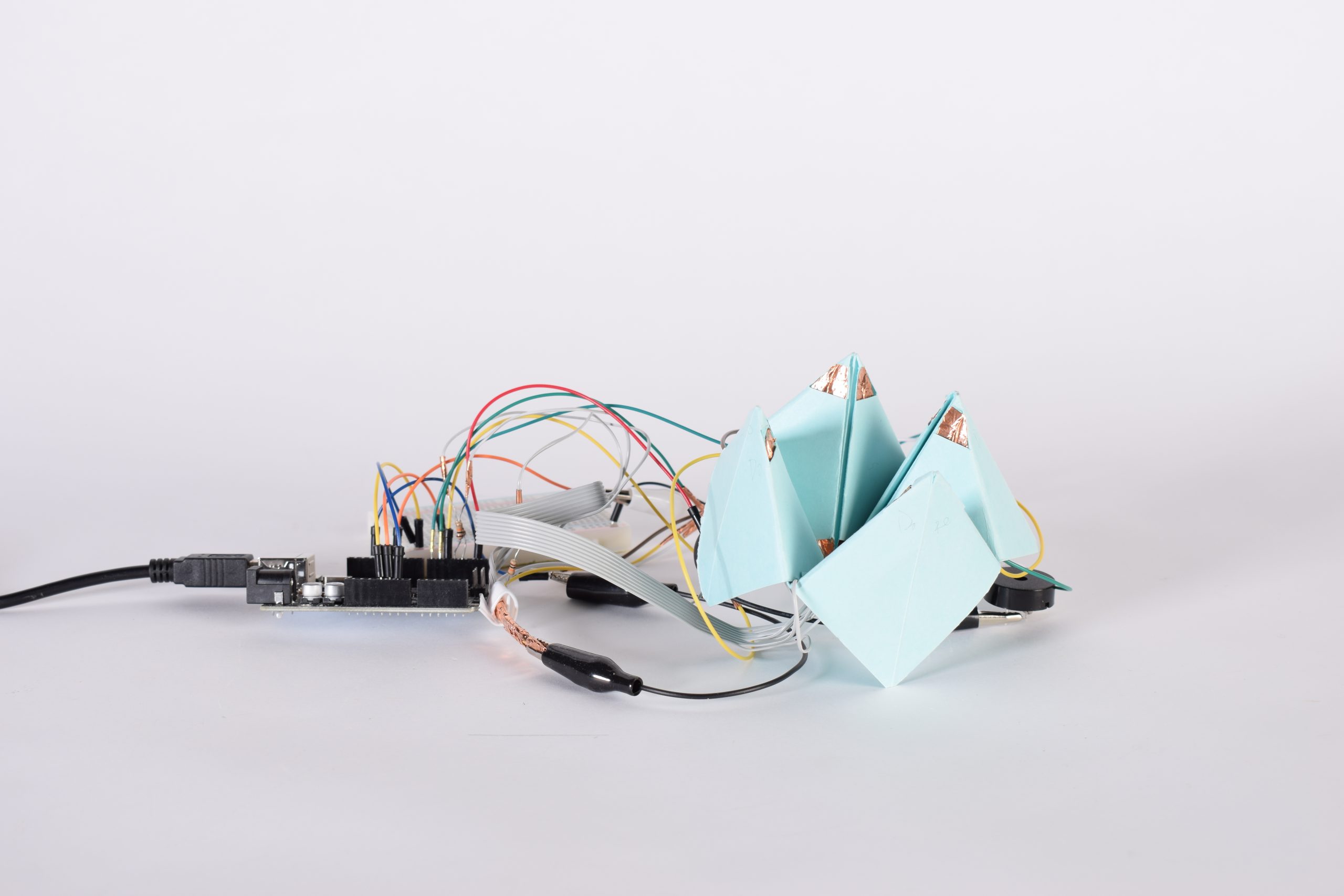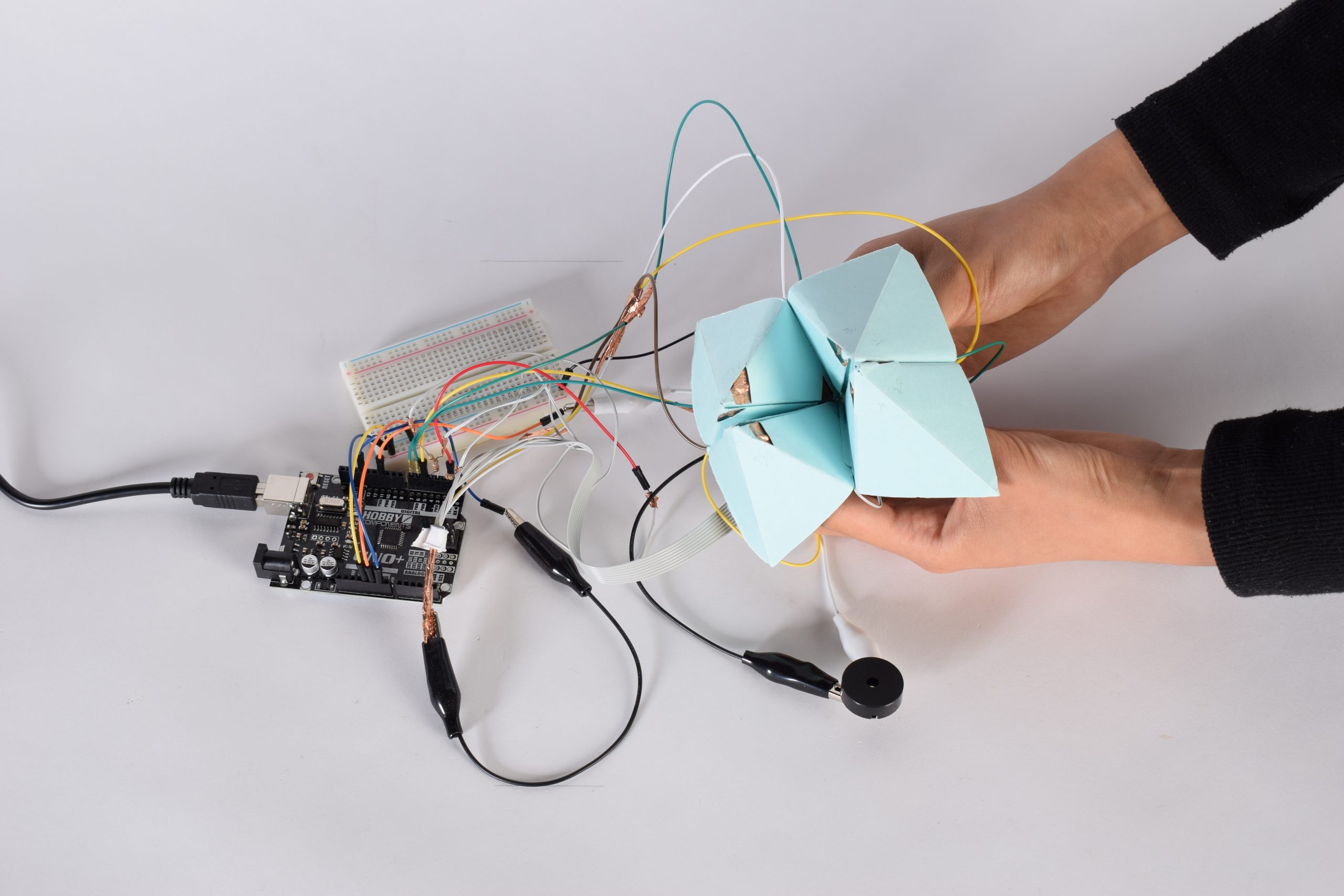I want to utilise my finding and creativity to modify the intricacies of life.
Major project
AutoGym--Exploring how visualisation devices can be used in correcting the bench press posture
AutoGym--1
The epidemic's spread has made an increasing number of people aware of the importance of exercise, with a large proportion opting to go to the gym for a workout on equipment. However, the bewildering array of gym equipment frequently makes newcomers feel awkward and unsure of where to begin. Personal trainers' high fees are a deterrent, and careless use of equipment (wrong form) can easily result in physical injury.
AutoGym--2
The reason for the design is that almost everyone in the gym is an "extremely muscular" person with obvious workout habits, and I hardly see any novices, and there is a significant gender gap. Through primary and secondary research, I discovered that novices in the gym can feel shy and awkward. They don't know how to use the equipment and, as a result, are hesitant to go to the gym (especially girls), even though gym equipment can help them exercise more efficiently.
AutoGym--3
So I used the bench press as an example and designed a system for inexperienced gym goers who don't want to hire a personal trainer. The Arduino device (and associated sensors) is mounted on the bench press machine and combined with an app to guide the user through the gym equipment, providing feedback via LCD during the exercise on whether the exercise posture is standardised and providing a summary based on each workout until the user is assisted in learning to use the equipment correctly. Based on positive data feedback such as SUS from user testing, the feasibility of the direction is proven.
Tech Bask at Tiffany's--1
Our team researched the jewellery store experience for millennials who are professional women living in the United Kingdom, to effectively utilise modern technologies resulting in a meaningful user experience(See video for details please).
Tech Bask at Tiffany's--2
Sketches to develop the whole service.
(See video for details please)
"ESWN" Origami Instrument--2
By combining origami with electronic methods such as sound and light to make it more entertaining, I challenged the status quo of "disposable origami games." Music is one of the most emotionally engaging ways to reduce stress (Incus), and I am creating sound feedback through paper folding in this project.
"ESWN" Origami Instrument--1
In this project, I examine and analyse the current position and situation of origami as a long-established recreational pastime in modern life. I explore further possibilities for the future of origami by merging it with Arduino and presenting it in a new interactive way.
Yueying Fang
Major project
AutoGym--Exploring how visualisation devices can be used in correcting the bench press posture
Awards
Won the Excellent Award of The First “Belt and Road” Sino-polish University Consortium Art Festival and Art & Design Competition in 2018.
Awarded school scholarship in undergraduate.
Work Experience
During my last year of undergraduate studies, I spent 3 months in the Creative Department of QWOM Digital Technology in Beijing. I was responsible for the production of a graphic poster for one of the 24 solar terms, learning about corporate poster production and layout through practice; used Photoshop to meet the brand's needs for the poster font design; used Rhinoceros to model the Forbidden City walls and the sacred animals to provide 3D material for the Forbidden City-themed posters.
In this company, I learned how to explore different angles of creativity to meet users' needs; how to help them understand their real pain points; the internship experience also helps me to improve graphic aesthetics.
In the gap year from 2020 to 2021, I interned in China Architectural Design and Research Group for 8 months, I worked in the architectural department on the project FZX-160 in Beijing City Sub-centre, communicating with the principals, collaborating on the analysis of the building site, plan analysis, and analysis of the moving lines of each floor, summarising the existing results, and submitting a written report to my supervisor; integrating the ductwork, structure, and building into the model, animating and rendering the main movement lines in Lumion, and finishing some of the presentation movies in the BIM department; written reports for the BIM department by merging the ductwork, structural, and architectural models, including, but not limited to, ducting analysis for specific rooms to show the design outcomes; in the Three Gorges Science and Technology Museum project, I used Rhinoceros software to revise models based on CAD floor plans, completed the modelling of the curved irregular curtain wall using the Grasshopper plug-in, adjusted the irregular grille spacing and deformation pattern, and made subsequent solution explorations and modifications based on the results; in the Botanical Garden Science Museum project, I optimised the irregular curtain wall surfaces and modelled the structural parts of the building according to CAD; other work included: designing recruitment posters for the department, assisting other departments with model modifications, rendering models, etc.
From this experience, I knew how to communicate and collaborate with different departments; how to organise the work at hand in an efficient manner; how to find the key points in the clutter of research information; and how to present clearly to supervisors.
